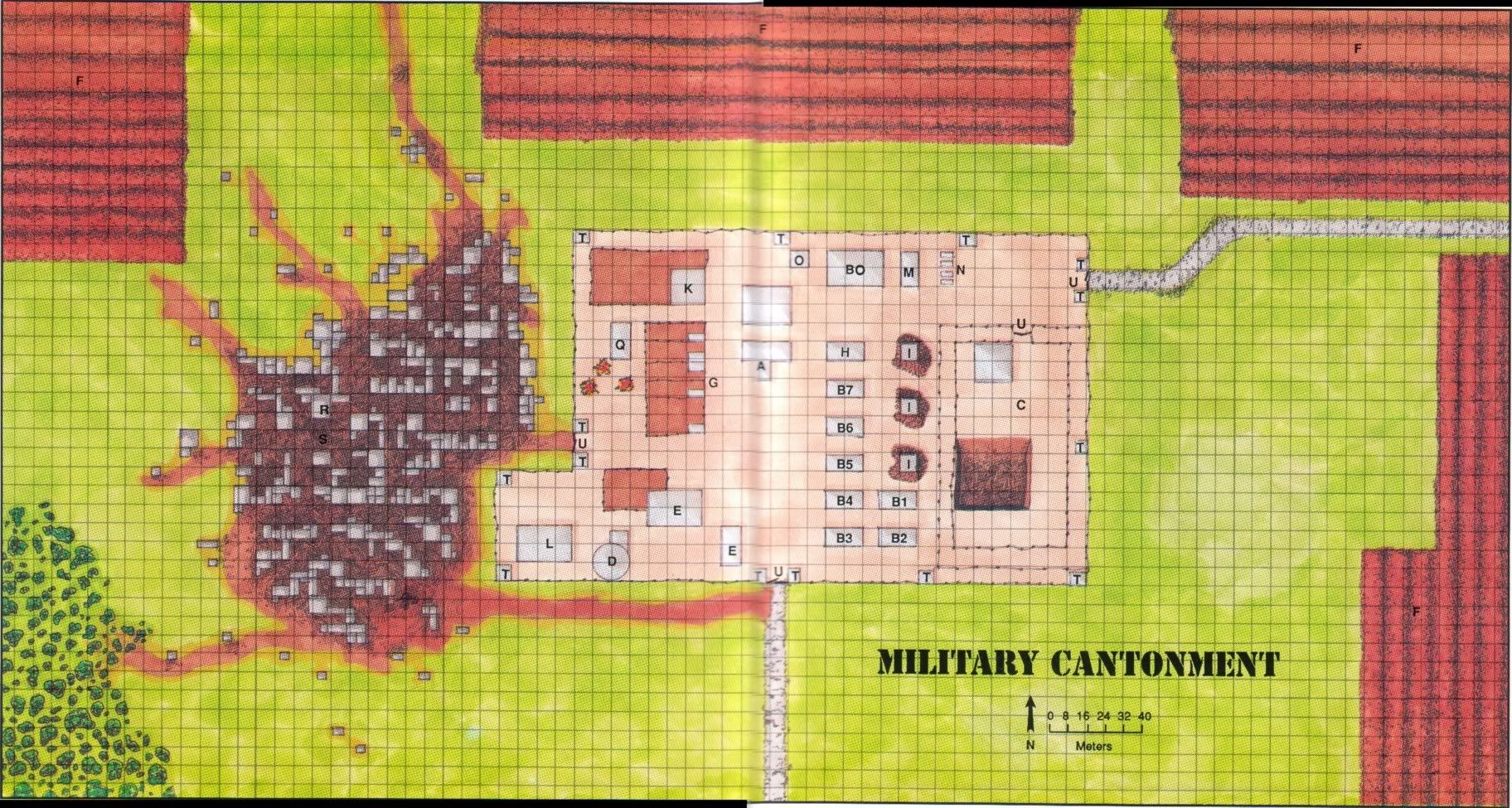Hi everyone,
I have some questions that i've been trying to figure out for a while about Cantonments. Does anyone have a basic outline of what is found in cantonments or even how the cantonments would be 'officially' and 'unofficially' referred to by the militaries that have had to establish them
I know most have roughly developed civilian Shantytowns or tent cities that have been built in their 'shadow' in hopes of getting protection form roving marauders and the like...
As for names of cantonments... I was thinking of using this as an example of an American Cantonment in Europe. Does anyone have a better template to use
US Army Base Camp Purgatory (US Army Europe, UNITED STATES EUROPEAN COMMAND)
Also... what is the smallest independent military unit that in your opinions would establish Cantonments My thought would be Battalions since they are the smallest self-sufficient military unit of command...
I had thought of Military Cantonments actually being a series of complexes spread out over an area of operations for a Division, broken into spheres of responsibility based upon Brigade, then down to the Battalion levels.
Has anyone else given any serious thoughts to this
(Sorry for the random nature of this post, i'll try and clean it up when i'm able... my brain is acting so werid right now. i'm really sorry about this.)
I have some questions that i've been trying to figure out for a while about Cantonments. Does anyone have a basic outline of what is found in cantonments or even how the cantonments would be 'officially' and 'unofficially' referred to by the militaries that have had to establish them
I know most have roughly developed civilian Shantytowns or tent cities that have been built in their 'shadow' in hopes of getting protection form roving marauders and the like...
As for names of cantonments... I was thinking of using this as an example of an American Cantonment in Europe. Does anyone have a better template to use
US Army Base Camp Purgatory (US Army Europe, UNITED STATES EUROPEAN COMMAND)
Also... what is the smallest independent military unit that in your opinions would establish Cantonments My thought would be Battalions since they are the smallest self-sufficient military unit of command...
I had thought of Military Cantonments actually being a series of complexes spread out over an area of operations for a Division, broken into spheres of responsibility based upon Brigade, then down to the Battalion levels.
Has anyone else given any serious thoughts to this
(Sorry for the random nature of this post, i'll try and clean it up when i'm able... my brain is acting so werid right now. i'm really sorry about this.)

Comment